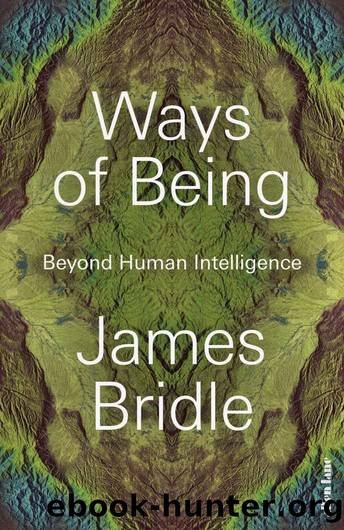Ways of Being by James Bridle

Author:James Bridle [Bridle, James]
Language: eng
Format: epub
Tags: review_metadata
ISBN: 9780141994277
Publisher: Penguin Books Ltd
Published: 2022-04-06T22:00:00+00:00
Among the earliest and most adorable of such machines are the little robots built by the neurophysiologist William Grey Walter at the Burden Neurological Institute in Bristol at the end of the 1940s. These robots were small, wheeled automata with hard shells, which trundled and bumped their way around the room and which, thanks to Walterâs ingenuity, altered their behaviour according to what they encountered. He called them Machina speculatrix, denoting a new species of machine, but theyâre better known as tortoises. Walter himself cited the Mock Turtle from Lewis Carrollâs Aliceâs Adventures in Wonderland: âWe called him Tortoise because he taught us!â5
The tortoises had a few ways of adapting their behaviour. First of all, sensors under their shells registered when they bumped into objects, causing them to head off in a different direction. In this way they would randomly move about and find their way around various obstacles. The first pair of tortoises, which Walter called Elmer and Elsie, were also equipped with light sensors. This gave them an ability observed in many animals, called phototaxis, or an attraction towards light. Like moths and jellyfish, the tortoises would move towards the nearest and strongest light source, allowing them to be led around the room with a torch or to return to their well-lit âkennelâ to recharge when their battery ran low. So far, so Roomba â but the tortoises exhibited other, stranger behaviours as well.
Walter compared the two sensors â light and motion â to two neurons, constituting a tiny brain. Yet the dynamic interactions between these two basic neurons were enough to produce a range of complex behaviours, or what Walter described as âthe uncertainty, randomness, free will or independence so strikingly absent in most well-designed machinesâ.6 For example, the tortoiseâs primitive light sensors were easily overloaded, meaning that the brightest lights would actually repel them. This caused them first to trundle towards a light source, then back away when they got too close, and then advance again, and so on. In this way, they would circle lamps in a nervous, stuttering pattern of approach and retreat.
The tortoisesâ most striking ability was produced quite unexpectedly by the addition of a small monitor light to their backsides, which was intended to show when their motor was running. Immediately, the machines displayed a new behaviour: on approaching a mirror or other reflective surface, they would catch a glimpse of their own light and immediately begin to jiggle at their own reflection âin a manner so specificâ, wrote Walter, âthat were it an animal a biologist would be justified in attributing to it a capacity for self-recognitionâ.7 Twenty years before it was formally defined, the tortoises passed the mirror test.
Walter contrasted his tortoises with early computers, which, knowing only a language of ones and zeros, and without senses beyond direct data input, he considered âin no sense free as most animals are free; rather they are parasites, depending on their human hosts for nourishment and stimulationâ.8 Walterâs machines were different, because
Download
This site does not store any files on its server. We only index and link to content provided by other sites. Please contact the content providers to delete copyright contents if any and email us, we'll remove relevant links or contents immediately.
The Complete Stick Figure Physics Tutorials by Allen Sarah(7312)
Secrets of Antigravity Propulsion: Tesla, UFOs, and Classified Aerospace Technology by Ph.D. Paul A. Laviolette(5311)
Thing Explainer by Randall Munroe(3877)
The River of Consciousness by Oliver Sacks(3543)
The Order of Time by Carlo Rovelli(3145)
How To by Randall Munroe(3039)
A Brief History of Time by Stephen Hawking(2962)
I Live in the Future & Here's How It Works by Nick Bilton(2938)
The Great Unknown by Marcus du Sautoy(2651)
What If?: Serious Scientific Answers to Absurd Hypothetical Questions by Randall Munroe(2638)
Midnight in Chernobyl by Adam Higginbotham(2485)
Blockchain: Ultimate Step By Step Guide To Understanding Blockchain Technology, Bitcoin Creation, and the future of Money (Novice to Expert) by Keizer Söze(2450)
Networks: An Introduction by Newman Mark(2360)
The Meaning of it All by Richard Feynman(2300)
Easy Electronics by Charles Platt(2282)
The Tao of Physics by Fritjof Capra(2231)
Midnight in Chernobyl: The Untold Story of the World's Greatest Nuclear Disaster by Adam Higginbotham(2179)
When by Daniel H Pink(2084)
Introducing Relativity by Bruce Bassett(2080)
